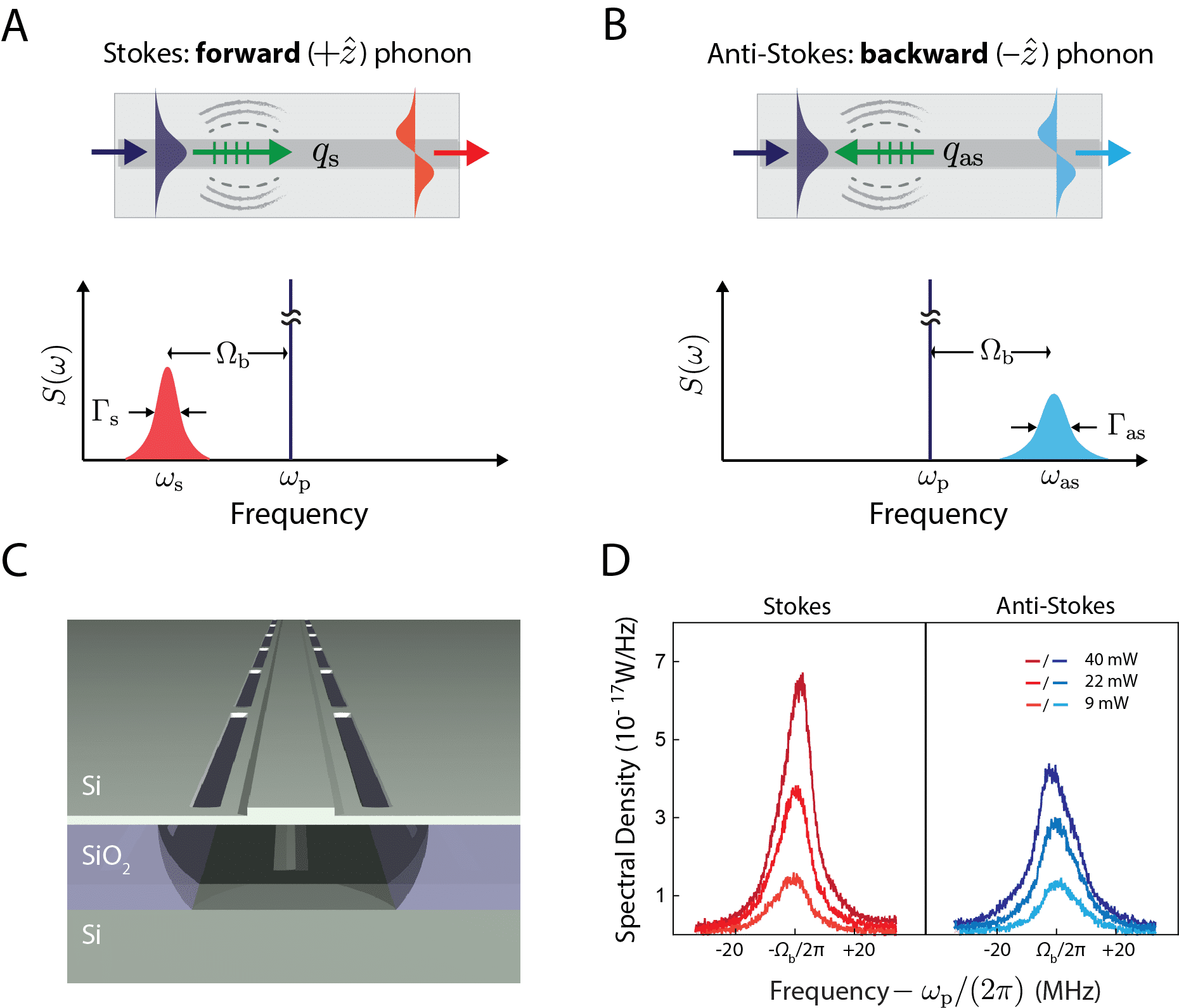
Continuum Optomechanical Cooling through Spontaneous Inter-modal Brillouin Scattering
2Department of Physics and Astronomy, Northern Arizona University
Here we demonstrate optomechanical cooling in a continuous system by leveraging a phase-matched inter-modal Brillouin process in a multimode silicon optomechanical waveguide.
The prevailing paradigm for optomechanical cooling—one of the most fundamental operations in cavity optomechanics—has long centered on the use of optical cavities to enhance and shape optomechanical interactions through dynamical backaction [1]. Recent progress toward more sophisticated and complex optomechanical systems has sparked interest in cooling optomechanical systems with more degrees of freedom [2,3]. In particular, the prospect of phonon cooling in continuum optomechanical systems presents intriguing new opportunities [3,4].
Here we demonstrate optomechanical cooling in a continuous system through a phase-matched Brillouin process, and we show that this interaction is sufficient to cool a band of traveling-wave phonons by more than 30 K [5]. This is made possible through the phase-matching-induced symmetry breaking and large Brillouin coupling strengths provided by inter-modal Brillouin scattering in a multimode silicon optomechanical waveguide [6].
In this system, optical phase-matching eliminates the need for an optical cavity to mediate cooling; since the Stokes (heating) and anti-Stokes (cooling) processes uniquely couple to forward- and backward-traveling thermal phonon fields, respectively, these two processes are intrinsically decoupled. Moreover, due to the wavevector-resolved nature of this process, we are able to selectively cool a band of phonon wavevectors within continuum of accessible acoustic states, simply by changing the wavelength of the incident light. We quantify the degree of cooling using a separate probe wave to perform spontaneous Brillouin scattering measurements, and we show that this system produces a form of wavevector-selective reservoir engineering that yields nonreciprocal phonon flow. Looking forward, these results represent an important stepping stone for managing noise and shaping optomechanical interactions in a wide array of important Brillouin photonic technologies.

Fig. 1 (A) The spontaneous inter-modal Stokes and (B) anti-Stokes processes are mediated by forward- and backward-propagating elastic waves, respectively. (C) Multimode silicon optomechanical waveguide. (D) Stokes and anti-Stokes spectrum at three different pump powers, revealing the power-dependent asymmetry characteristic of continuum optomechanical cooling/heating.
References
1. M. Aspelmeyer, T. J. Kippenberg, and F. Marquardt, “Cavity optomechanics,” Rev. Mod. Phys. 86, 1391 (2014).
2. R. Van Laer, R. Baets, and D. Van Thourhout, “Unifying Brillouin scattering and cavity optomechanics,” Phys. Rev. A 93, 053,828 (2016).
3. F. Marquardt and P. T. Rakich, “Quantum theory of continuum optomechanics,” New J. Phys. (2018).
4. Y.-C. Chen, S. Kim, and G. Bahl, “Brillouin cooling in a linear waveguide,” New J. Phys. 18, 115,004 (2016).
5. N. T. Otterstrom, R. O. Behunin, E. A. Kittlaus, and P. T. Rakich, “Optomechanical cooling in a continuous system,” arXiv preprint
arXiv:1805.02502 (2018).
6. E. A. Kittlaus, N. T. Otterstrom, and P. T. Rakich, “On-chip inter-modal Brillouin scattering,” Nat. Commun. 8, 15,819 (2017).

Powered by Eventact EMS